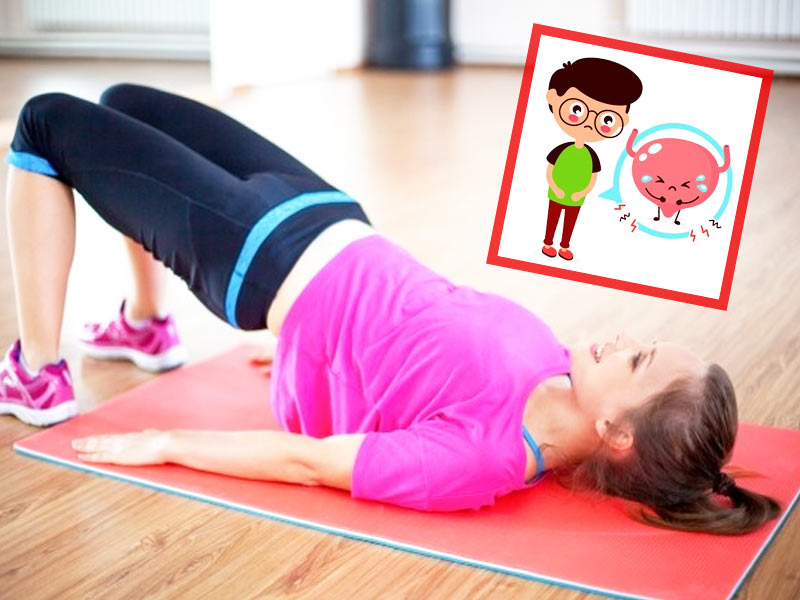
Your pelvic floor muscles may weaken after childbirth or as you get older. The bladder, bowel, and uterus are all supported by pelvic muscles. The organs are elevated, and the entrances to the vagina, anus, and urethra are tightened, as they contract. Urine and faeces can be expelled from the body when the muscles are relaxed. Sexual function is also impacted by the muscles of the pelvic floor. These muscles can be strengthened to lessen pelvic pain during sex and improve the ability to achieve pleasurable sensations. The pelvic floor muscles support the baby and aid in the birthing process throughout pregnancy. Dr. Ananya Nema, Consultant Physiotherapist, Motherhood Hospitals, Indore has listed down five pelvic floor exercises to provide relief in urinary incontinence.
Table of Content:-
The pelvic floor muscles might decrease as a result of pregnancy and childbirth, as well as other factors such as aging, obesity, hard lifting, and persistent coughing. The following symptoms can be caused by weak pelvic floor muscles:
- Incontinence
- The uncontrollable movement of the wind
- Unpleasant sex
While completing pelvic floor muscle training exercises, it's critical to keep the following muscles relaxed:
- Abdominal
- Buttocks
- Thigh
Pelvic Floor Exercises for Urinary Incontinence

A vaginal cone, which is a weighted device that is put into the vagina, can also help a woman strengthen these muscles. To keep the device in place, you tense the pelvic floor muscles. Down below are five such exercises that you can do to prevent and ease urinary incontinence.
Kegels
The act of tightening and loosening the pelvic floor muscles is known as Kegels or pelvic muscle exercise. If you experience pee leakage from sneezing, laughing, leaping, or coughing, or if you have a strong urge to urinate right before losing a big volume of urine, Kegels may help.
While the exercise is mostly for stress urinary incontinence, it can also help with urge incontinence caused by an overactive bladder. The activities are important to help develop enough strength, coordination, and endurance to cope with life after childbirth and the effects of aging.
Also Read: Pelvic Pain Is Common In Women, Here Are Some Potential Causes
Squats

Squats make use of the body's major muscles and generate one of the most substantial strength improvements. Make sure your form is solid before applying any resistance to this basic technique. The Gluteus maximus, hamstrings, and quadriceps are the main muscles used.
The bridge
It is an excellent glute exercise. It also engages the pelvic floor muscles if done appropriately. Even if you're not carrying any weight, the pause and pulse of this action will make you feel it.
Gluteus maximus, hamstrings, and pelvic floor muscles are used.
Split tabletop
Tabletop is a leg technique that serves as the foundation for many Pilates exercises. You're also exercising your hips and pelvic floor muscles by doing the split.
Abs, hips, and pelvic floor muscles are used.
Also Read: What Is Anterior Pelvic Tilt And How Can You Fix It?
Bird dog
It is a full-body action that engages numerous muscles at once, including the pelvic floor. It is a balance and stability exercise. Abs, back, glutes, and hips are the muscled used.

- If you're not sure if you're using the right muscles in your pelvic floor, you can utilize biofeedback and electrical stimulation to help you figure it out.
- Biofeedback is a positive reinforcement technique. Electrodes are inserted along the anal area and on the abdomen. To measure the contraction of pelvic floor muscles, some therapists put a sensor in the vagina or anus in men.
- A graph will be displayed on the monitor to illustrate which muscles are contracting and which are not. The therapist can assist you in locating the appropriate muscles for pelvic floor muscle training.
If your pelvic floor muscles need to be strengthened, there are a few simple activities you can integrate into your regimen to help. To get the best results, remember to intentionally engage the muscles during each exercise.
Image credits- freepik
Also watch this video
How we keep this article up to date:
We work with experts and keep a close eye on the latest in health and wellness. Whenever there is a new research or helpful information, we update our articles with accurate and useful advice.
Current Version